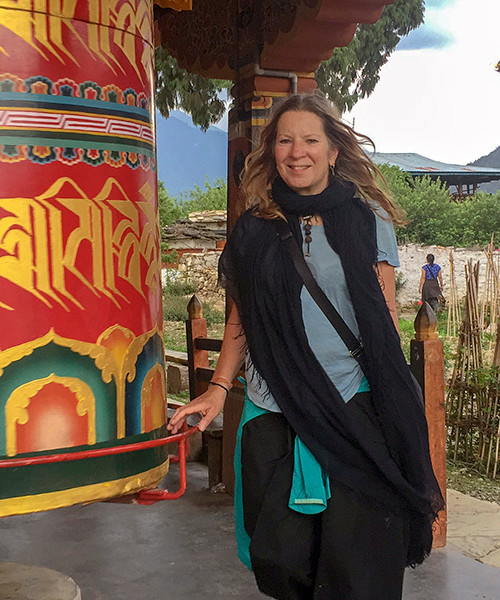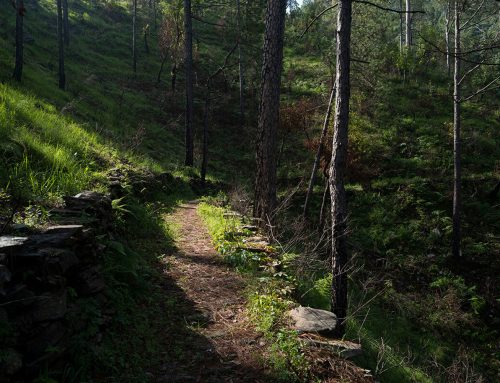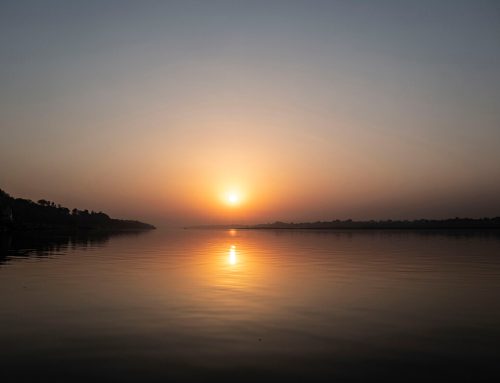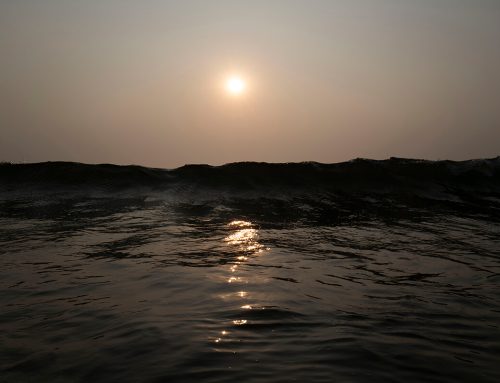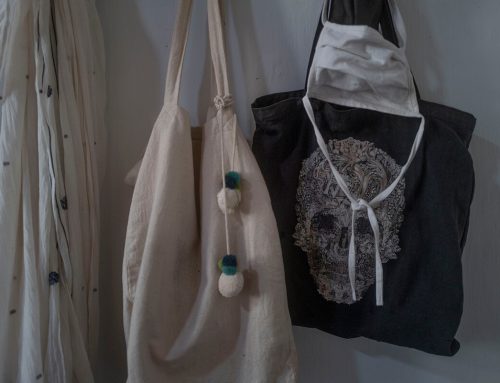From agony to ecstacy on a 10-day silent Vipassana retreat
I arrive in the ‘Golden Land’ of Myanmar (Burma) and drop of my bags at Dhamma Joti Meditation Centre in Rangoon (Yangon). With a few hours to spare, I head to the famous Shwedagon Pagoda. Like the Statue of Liberty and the Eiffel Tower, Shwedagon has achieved iconic status. Its golden stupa rises up above Yangon as a testament to all that is ancient and timeless. For Myanmar Buddhists, it’s the most sacred site in the country – partly because it contains eight hairs of the Buddha – and is a place that all Burmese hope to visit at least once in a lifetime.
Legend has it that in 585 B.C. two brothers, Tapussa and Bhallika, brought the original eight sacred hairs of Gotama Buddha from India to Myanmar. Before the hairs were safely enshrined, the King of Ajetta took two of them and the King of Nagas (a serpent who transformed himself into the likeness of a human being) stole two more. With the help of a number of Nats (spirits) and the king of the region, the brothers found the hill where relics of three previous Buddhas had been enshrined. (Apparently a new Buddha appears every 5,000 years.) Before placing them in the vault, King Okkalapa opened the casket containing the relics and discovered that all eight hairs were there instead of four!
Some amazing events took place:
The Hairs flew up to the height of seven palm trees emitting rays of variegated hues with such a splendor that the dumb could speak, the deaf heard sounds, the blind beheld objects, the lame could walk, the earth quaked, the ocean winds blew, lightning flashed, Mount Meru shook, and a rain of gemstones fell knee-deep.
Once the hair relics were enshrined, a golden pagoda was erected over silver, tin, copper, lead, marble, and iron brick pagodas up to a height of 20 m. Today, the enormous bell-shaped stupa rises nearly 100 m above its base, has a circumference of 433 m, and is gilded with more than eight tons of gold . Sixty-four smaller stupas flank its octagonal base. The Diamond Bud Hti, at the upper- most part is decorated with rubies, sapphires, jade, emeralds and superb diamonds – including a single exquisite 76-carat diamond. Shwedagon looks like a glittering, golden city filled with ornate temples some with decorative roofs hand-carved in teak and painted in gold that cascade to the heavens. No one is sure what’s inside the four entrances leading to the base of Shwedagon Pagoda. Legends tell of flying and turning swords that never stop to protect the pagoda from intruders; some say there are underground tunnels leading to Bagan and Thailand! Kipling called Shwedagon “a golden mystery…a beautiful winking wonder.”
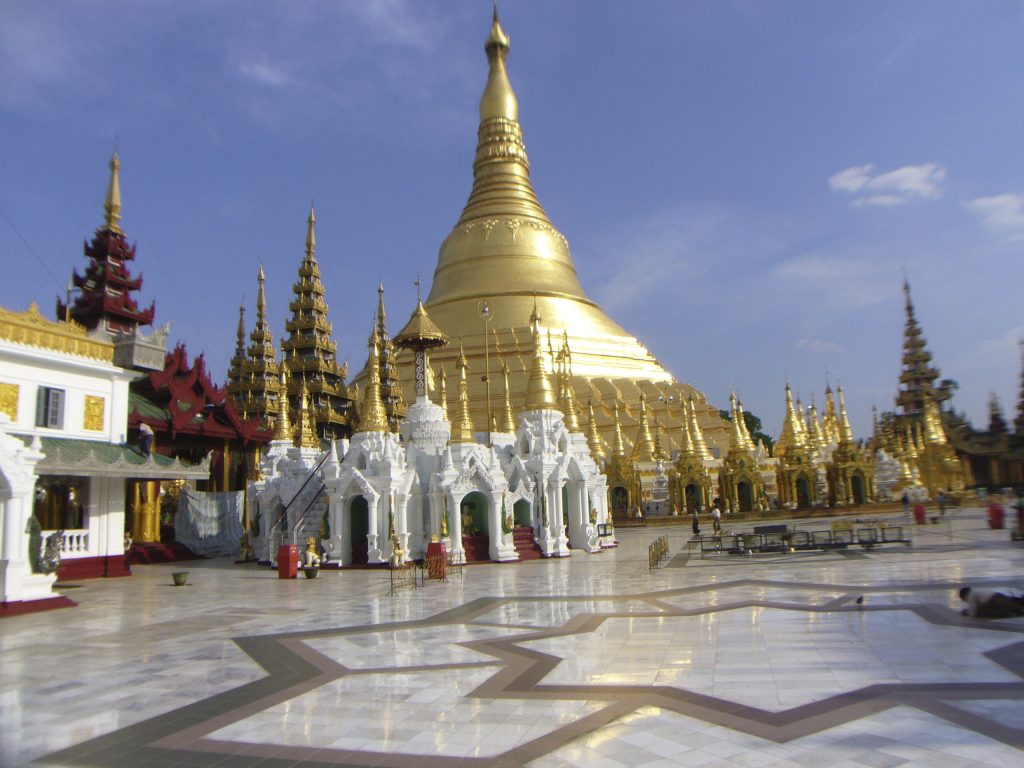
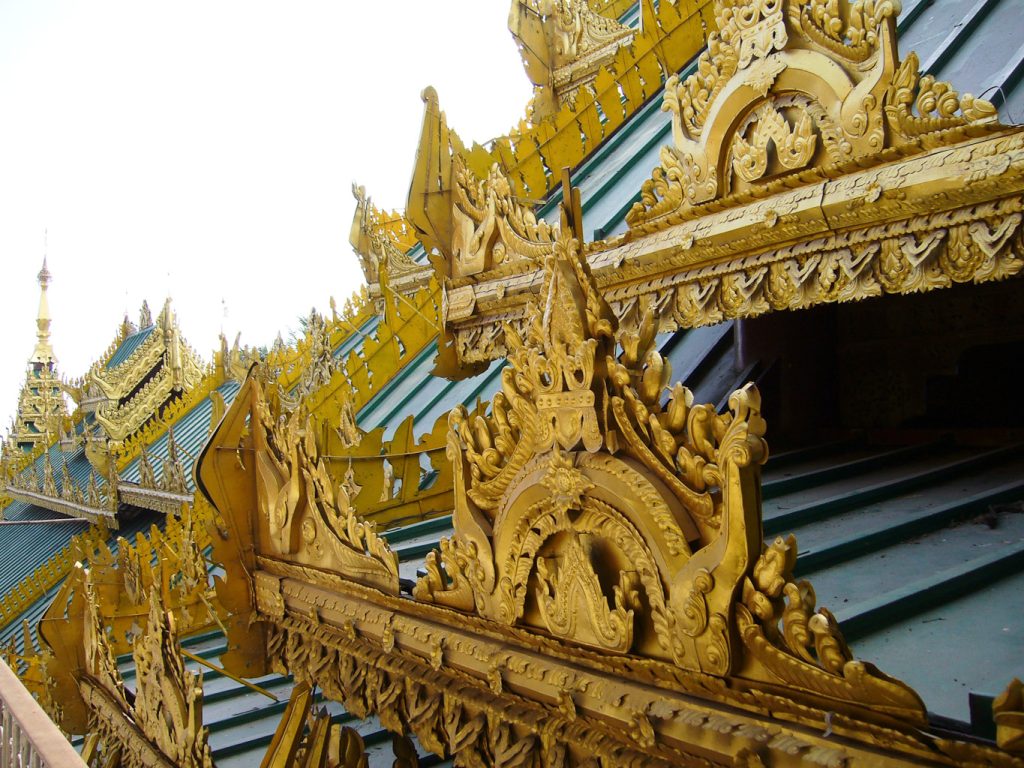

Shwedagon Paya, Yangon, Myanmar (Burma). Great golden dome rises 98 m above its base. 6 – 10th C. built many times with current form dating back to 1769.
So there I am under the sweltering noon-day sun in search of an air-conditioned café on the way to the temple. No such luck. The only place I find is a Burmese teashop tucked away in the shade between two buildings. I barely set foot in the place when a monk gestures for me to join him. I sit down on a small plastic stool at a knee-high table. He ceremoniously drinks a coffee and smokes a fag. I instantly like him. He is about 24 years old, very sweet in his burgundy robe, with a vibrant smile and speaks English fluently. We chat while I drink a strong Bamar tea with sweetened condensed milk. He offers to share some “secrets”, tell me about the mind in meditation. Really, he wants to tell me that his dream is to write post-modern literature and lists off a number of modernist writers – Camus, Nietzsche , Dostoevsky – he admires. I think he has his genres mixed up. He tells me that foreigners try on meditation, like they’re shopping, but that it doesn’t work if you don’t have faith. I tell him I didn’t think real monks smoke and hang out in teashops. He says he’s overcoming his aversions and attachments to things. Maybe he’s exploring his Tantric path. This is as good a place as any to meet an unsuspecting tourist.

Shwedagon Paya, Yangon, Myanmar (Burma). Great golden dome rises 98 m above its base. 6 – 10th C. built many times with current form dating back to 1769.
Bless him. Off we go. My personal guide takes me on a tour though Shwedagon for which I am most grateful. Although he shares no secrets about enlightenment, the sacred place provides a backdrop, a context, for my mind during meditation. There are pavilions studded in reflective mosaic mirror tiles; temples adorned with golden Buddhas 15 m tall; Buddhas with neon orbs flashing around their heads like auras; a 23-ton Maha Ganda Bell; a sacred Bodhi, or Banyan, tree grows from a cutting of the one in Bodhgaya, India under which Gautama Buddha gained enlightenment. It’s not long before he reveals his plans to set up his own monastery, and spread his own version of Buddhist philosophy into the world, and can I make a donation? I want to tell him to go back to his monastery and study for another decade. Instead, I dig into my wallet and give him a tenner, the cost of a guide. He’s caught me right at the end of my travels, and my paltry remaining cash is earmarked for my own retreat centre. He implores me for more! I promise to send him an English dictionary and some books written by real postmodern authors when I get back to London.
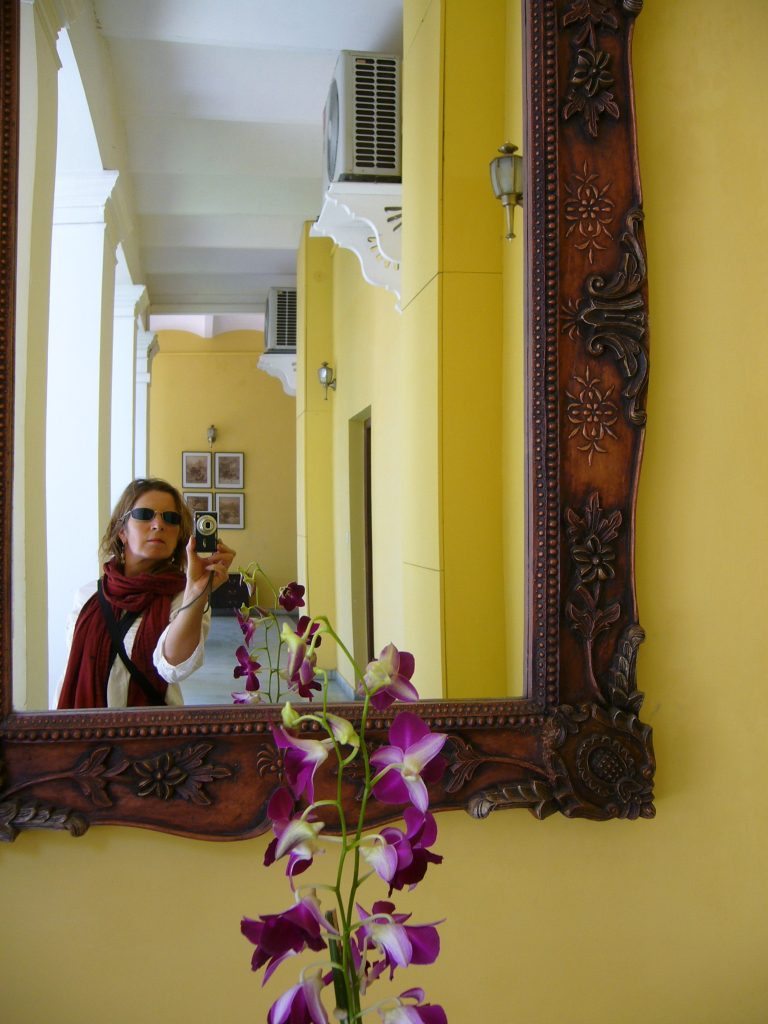
The Dhamma Joti Meditation Centre is the source from which S.N. Goenka built his Vipassana empire. He has taught tens of thousands of people and has established meditation centers in India, the United States, Australia, New Zealand, France, the United Kingdom, Japan, Sri Lanka, Thailand, Burma, Nepal, and other countries. S.N. Goenka teaches Vipassana in the tradition of his teacher, the late Sayagyi U Ba Khin of Burma (Myanmar), an ancient technique that has been handed down, orally, from teacher to student, for 2500 years back to the time of Gautama Buddha. It’s considered to be the method he used to attain enlightenment.
Vipassana meditation comes out of the same vedantic past as Ashtanga “classical” yoga, and there is similarity between the 8-limbed path to enlightenment written down in the Yoga Sutras by the great sage Patanjali and Mahayana Buddhism, which might explain why so many yogis do Vipassana. The most famous verse in the Yoga Sutras, and rightly so, for its the definition of yoga upon which the entire text turns, is ‘Yogas citta vritti nirodhah.” “Citta” is usually translated as mind-stuff, but can extend to the entire sphere of consciousness. Citta, according to Patanjali and others, is by its very nature expressed in “vritti” form. Vrittis are continual agitations, both conscious and unconscious, and are the root of our “avidya”, or ignorance, about who we really are and what reality is. “Nirodhah” means restraint, but can be seen as the process of resolution to describe the state of yoga. So, the verse translates as: “Yoga is the state in which the agitations of consciousness are resolved; the fluctuations of the mind cease and become still.” This is the philosophy at the heart of Vipassana meditation.
Between 400 and 480 BCE, when Gautama Buddha achieved enlightenment and was teaching the Dharma/Dhamma, there was great opposition to his teachings from the ruling Brahmin priests who made their livelihood conducting rituals. Buddhism was practiced in India for a few centuries after the Buddha died, but the Mahayana lineage eventually went into decline; the teachings, however, took root in Sri Lanka, Thailand, Cambodia, Laos and Burma. What the Brahmins found most objectionable was that Gotama taught a technique where practitioners could attain liberation through their own efforts, hence putting the priests out of business. Buddhism is not a religion; Buddhists do not believe in god. The Buddha didn’t want you to pray to him. To walk the Noble Path of liberation, enlightenment, Dhamma, you have to walk each step. No one can take you straight there. Faith has little to do with it. You’re not chanting, visualizing deities, or praying for salvation. Meditation is a scientific tool to purify the mind through self-observation and free our self from the bondage of suffering. The last words of the Buddha were: Know Thyself.
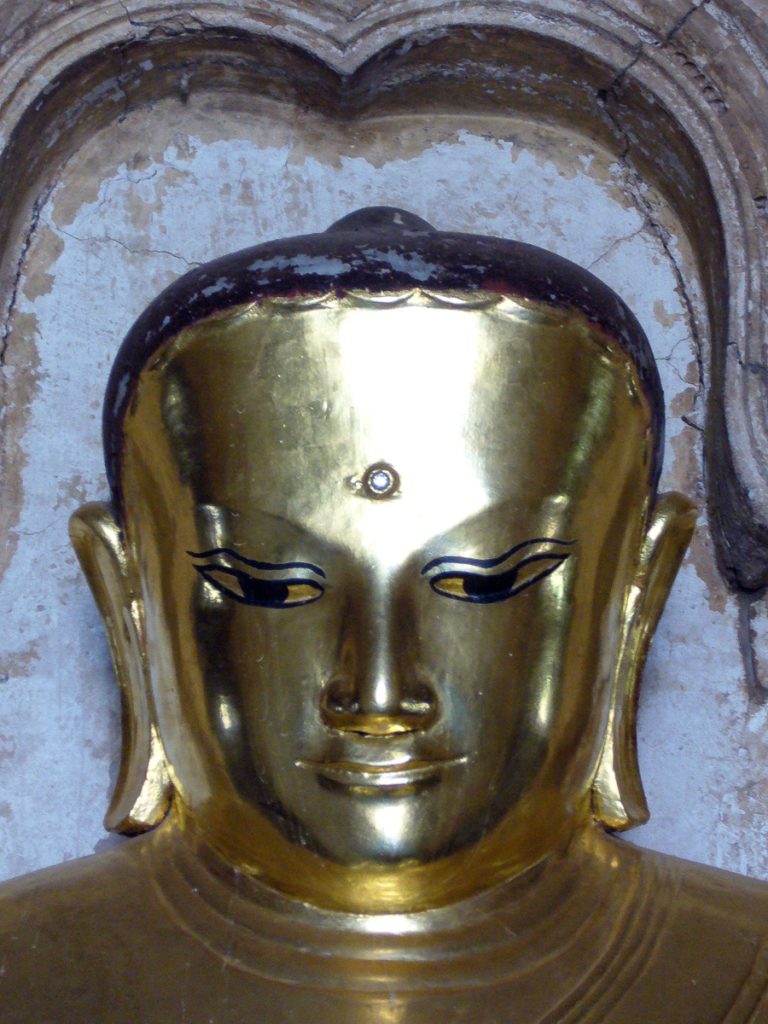
Dhamma Joti is close to the centre of Rangoon, yet it feels far removed. It’s a lush, sprawling centre with giant teak trees, palm and banana trees, citrus, bamboo and exotic flowering trees. There is a meditation hall, dining hall, a shrine with golden Buddhas, and a pagoda flanked by meditation cells. Young meditators sleep dormitory style; older people share accommodation. Urban sounds, like “Hotel California” play on a transistor radio, dissolve into birdsong, monkeys, cricket and frogs, and the soundscape of a jungle at night. Sleep is broken by the primordial pre-dawn sound of monks blowing long horns and dogs barking.
After filling out the obligatory forms, I’m taken to my room, or my prison cell, which I now think of it as fondly. It’s the worst place I’ve ever stayed. I’m aware that my equilibrium could be shattered instantly, so remind myself of my willingness to embrace austerity and renunciation. I stand in a concrete bunker with two twin beds and a desolate bathroom, the kind where you turn on the tap to brush your teeth and the water, and toothpaste, runs through a pipe on to the floor. It would be OK if the drain worked properly, but I find myself standing in a few inches of water, in a malarial zone, each time I have a shower. Fortunately, the toilet plumbing takes the contents outside! But there is an open sewer outside my window and I worry about catching some air-born bacteria or Denge Fever. Thank goodness I brought my mosquito net. I keep thinking of Orwell’s amusing quote in Burmese Days : “In the night master was too drunk to mind the mosquitoes, and in the morning the mosquitoes were too drunk to mind the master.” But then we didn’t have the luxury of intoxicants.
I sit on my foam and straw mattress and read the list of rules: All forms of worship should be discontinued. No religious objects are allowed. All other meditation techniques, and healing or spiritual practices, are to be suspended. Strict moral guidelines are essential to allow mind to quiet down sufficiently so that it can proceed on the path to liberation. I promise not to kill, steal, commit sexual misconduct, tell lies, or use intoxicants during the course. Men and women will be kept separate. There will be no communication with the outside world. Noble Silence is to be observed from the beginning of the course until the morning of the last full day, and any form of communication with fellow students, whether by gestures, sign language, written notes, etc., is prohibited. No reading or writing materials are allowed. And, I’m expected to stay for the entire duration of the course. I’m going on a journey deep into my mind and it could be dangerous to return to the outside world without proper preparation. Fair enough. I’ve come a long way to do this retreat so I sign away my freedom, in search of liberation.
Our dreams are broken at 4 a.m. by the resonating sound of the gong and the entire day was rigorous:
4:30-6:30 a.m. – Meditate in the hall or your own room
6:30-8:00 a.m. – Breakfast break
8:00-9:00 a.m. – GROUP MEDITATION IN THE HALL
9:00-11:00 a.m. – Meditate in the hall or your own room
11:00-12:00 noon – Lunch break
12-1:00 p.m. – Rest and interviews with the teacher
1:00-2:30 p.m. – Meditate in the hall or your own room
2:30-3:30 p.m. – GROUP MEDITATION IN THE HALL
3:30-5:00 p.m. – Meditate in the hall or your own room
5:00-6:00 p.m. – Tea break
6:00-7:00 p.m. – GROUP MEDITATION IN THE HALL
7:00-8:15 p.m. – Teacher’s Discourse in the hall
8:15-9:00 p.m. – GROUP MEDITATION IN THE HALL
9:00-9:30 p.m. – Question time in the hall
9:30 p.m. – Retire to your own room – Lights out
I’ve wanted to do a proper meditation retreat, partly to find a technique that investigates the mind in a similar way that yoga does, out of curiosity to see if I could enter an altered state of consciousness and acquire supernatural Siddhi powers, but also because I’ve spent much of my life in an existential malaise spreading my misery to those around me. I no longer think that this is a proper way to live. I want to be at peace with myself, and with all others, yet I know that when unwanted things happen in my life that I usually react in a certain way, out of fear, anger or passion. My mind continues to gouge deeper into the same groove, like some vintage vinyl. Deep-rooted, emotional seeds from past actions rise from the unconscious level of the mind, and by the time they reach the surface, have gained so much strength that I’m overwhelmed. But, rather than express my anger I tend to repress it in a way that only harms myself. Most people look outside for the cause of their unhappiness; they blame and try to change the reality outside. But, really, the cause of suffering lies within. I spent decades doing various forms of therapy, body work and shamanic healing – I would probably be dead by now if it wasn’t for my yoga practice – and while all these have helped me deal with challenges in my life, something tells me that as long as negativity exists in my mind that it is impossible to find inner peace. Ten days is a short time to penetrate the unconscious mind and eradicate the complexes lying there, yet it feels like the longest 10 days of my life.
In the meditation hall we site side-by-side on meditation cushions. I am the only female foreigner. There are three male foreigners – a Japanese guy and two Europeans, dressed in Thai fisherman trousers, who mysteriously disappear before the end of retreat. So they can’t hold you in here against your will. Thankfully, my place is at the back of the room by a screened door. One hundred and twenty Burmese women sit cross-legged wearing traditionallongyis (skirts) with blouses that cover their shoulders. I’m in awe of the various designs from Chinese floral to tribal geometric. The women look demure and sexy and have this amazing, jet-black hair flowing the entire length of their spine, others in fancy styles wrapped up in exotic combs. March is not the time to be here. Most foreigners come from September through December when the heat is not so oppressive. Even the Burmese complain about the heat.
A friend of mine did a Vipassana course in Nepal over Christmas and told me that the easiest way to sit is in a straddle with the legs in front. When I tried it out one of the assistant teachers, a Chinese-looking lady with a blunt hairstyle, reprimands me. I’m not to have my feet facing a teacher, or the Buddha, as it is a sign of disrespect. She tells me not to lie down, or attempt any yoga asana – or I’ll be asked to leave. She is so scarily efficient I assume she has military training. She knows exactly where I am and what I do every moment of the day. The Burmese sit comfortably for hours because they sit on the floor all the time, and many use squat toilets, but for us westerners its agony to sit in any position for long. And we had to sit 10 hours a day! I’m committed to one of the most grueling experiences of my life, and I like to think of myself as pretty hardcore.
Vipassana means observing things as they are, not as you would like them to be, or as they appear to be. In a nutshell, the core of this ‘insight’ meditation technique is the process of maintaining equanimity of the breath while feeling sensations in the body – some pleasant, some unpleasant – and not reacting to them. The theory behind this is that by not craving pleasurable sensations, or having aversion to painful ones, we are able to experience equanimity in all situations. The technique eliminates deep-rooted thought patterns and destructive behavioural matter so we can let go of misery and suffering. By not continually reaffirming our likes and dislikes, we no longer deepen the groove of samskara (past actions).
There are three steps to Vipassana training – Sila (conduct), Samadhi or Samatha(concentration), and Panna (wisdom). The important first step of moral conduct is Ahimsa (non-harming). I promise not to disturb the peace and harmony of others. It’s impossible to liberate oneself from suffering if we continue to perpetuate it towards others. Everything starts with intention of thought, so if we plant the seed of anger, before it’s manifested in either speech, or action, it hurts us before anyone else.
To prepare the mind for Samadhi, we do something called Apana where we simply observe the natural rhythm of the breath. For the first three days – 10 hours a day – I focus on the area of my face from the nose to the upper lip, watch my breath as it comes in and out, and train my “wild mind” to fix on a single object: the breath. Once concentration is strong enough, the mind becomes calm and we can see into the ultimate nature of reality, eventually obtaining release from all suffering. Panna purifies the mind of ignorance and defilements by developing insight into one’s own nature. To do this, we are told to bring our awareness to the top of the head and systematically move it through the body looking for sensations and observing the ever-changing mind-matter phenomena with dispassion.
Three days later, we’re still doing it, but have sped up the process to sweep the body from head to toe, and toe to head, feeling gross and subtle sensations, and then return to the hazy bits that seem devoid of feeling. Finally, we pierce below the skin level and move through the body front to back, from the external inwards to the ultimate truth of mind and matter. Whenever any negativity arises, the breath loses its natural rhythm and, on a subtler level, a biochemical reaction occurs that produces sensation. By simply watching the breath and sensations, and learning to observe without losing the balance of the mind, we stop reacting to and multiplying our own misery. It sounds simple enough, but its really hard. People think meditation is all bright lights and ecstasy, but it can be mind-numbingly tedious.
To break up the monotony there is always food. Breakfast is served from 6:30 – 7:30. We sit at long tables in silence, avoiding eye contact, eating what is given to us on charity, like monks and nuns, seeking renunciation as if begging with an alms bowl. After a few days, I actually enjoy my bowl of rice, with a few soybeans, and greedily take two cups of coffee if there is any left. Occasionally, there is vermicelli noodles, or spaghetti, with chili sauce, and, thankfully only once, a rice congee. Lunch is served at 11 AM and is the last meal of the day – a Thali-style Indian/Chinese/Thai fusion of rice and various vegetables and salads. I save my lunch banana for my evening malaria tablet, and have to confess that I smuggled in a box of oatcakes. Five PM is a tea break. I wish they’d serve tea, but instead there are aluminum glasses filled with pink ‘Kool-aid’ and trays of palm sugar fudge that have an effect like speed, revving my mind up for the evening session.
We’re encouraged to get some fresh air and exercise after the meals, so in the early morning and evening, when the sun isn’t too hot, I wrap myself in my gossamer thin, beige Kashmiri pashmina and walk around the grounds. I walk mindfully, as a ‘moving meditation’, slow as possible, with total equanimity of movement, smoothly shifting my weight by lifting up one foot and feeling every muscle as I place it back on the earth. In a true vinyasa yoga style, I synchronize the movement to my breath and feel vibration in every cell of my body. Suddenly, I feel totally absorbed and below my feet insect life comes into vivid detail. Ants construct freeways and green stick insects emerge from under camouflaged leaves. I discover that I’m moving slower than an ant.
Outside the meditation hall the steps are lined with over 100 pairs of brown Burmese flip-flops in a neat and orderly fashion. I refill my water bottle from one of the numerous containers of purified water and settle on my cushion. At the beginning of each session, the voice of S.N. Goenka comes over the stereo system telling us to “Start again!” I concentrate on the area between my nose and the upper lip, my focus sharp and penetrating, feel the breath flow in through my nose on the inhalation, and out through the nostrils on the exhalation, plunge into the depth of my mind, scan my body from head to toe, and toe to head, countless times in search of sensations. I patiently wait for signs to nirvana. As the days go by, the act of sitting is excruciatingly painful.
Mornings are the best because my mind is fresh and my body rested, but by the time the 38-degree heat hits at noon my mind begins to wage a war. I’d rather be anywhere than in this stifling room, with no fans, sitting side-by-side with 200 people on meditation cushions. I simply cannot scan my body. It feels unpleasantly heavy and blank. My mind is dull. Each time I get to the tip of my nose I drop off in a wave of heat/sleep delirium. I give up exhausted, frustrated and silently believe its all a waste of time, and that its insanity to expect a rank beginner to actually sit still and focus in this heat and try to pretend that a cool breeze is no more pleasant than the beads of perspiration rolling down my chest, collecting into a trough between my breasts, and cascading into a raging torrent soaking my clothes. I find this perpetual clamminess and damp clothes saturated in mosquito repellent repulsive. The thought of a shower in my malarial den brings no relief. Everything irritates me – the heat, to the tedium of meditation, and the annoying burping and retching sounds emitted by the Burmese. It is probably just some poor regurgitating soul with indigestion who I should feel compassionate towards, instead I feed the aversion, let it become so repulsive that the sound leaps across the room like the roar of a tiger to pounce on me. I’m all tied up into a Gordian knot of misery. Of course, the more I focus on my suffering, the agonizing pain in my hips grows worse. Lesson 1.
Each evening I watch a video, in English, in which S.N. Goenka discusses some aspect of Vipassana philosophy and tries to contextualise our experiences. I’ve being doing it all wrong. My desire to move through the pain simply to end suffering only creates more samskara, more aversions, in the practice. If I crave enlightenment, I might as well run in the opposite direction. I need to stop these feelings of aversion to things I don’t like and not get attached to anything pleasant. I need to free my mind from all ‘likes’ and ‘dislikes’ and stay with the equanimity of the breath, so that I can do the same thing in my life, and attain true liberation, by freeing myself from the bondage of suffering.
I’m thrilled about my new ‘meditation cell’ in the Pagoda. Its a teak room about 3′ x 7′ and I can’t wait to do an illegal handstand. But then it starts again – the regurgitating demon is in the next cell. Can’t believe my luck. Does the word ‘silence’ mean nothing to these retching devils? I seriously consider imposing my will on the assistant teacher to insist on another cell, but then realise that this would be an act of delusion. I shouldn’t blame my misery on external things. I can’t control others or change them. I can only change myself. I can only look inside myself, subdue my own aversion, and befriend the beast within. Seek wisdom, tolerance, and truth. Go with the flow.
For the first three days we are allowed to shift positions whenever the discomfort becomes unbearable. Then we are asked to do a Fierce Determination Sitting for an hour, three times a day, without moving. This is where the technique gets interesting. I feel no pain for the first 20 minutes, but it eventually appears regardless of what position I sit in, and it continues to build in intensity. Sitting cross-legged, not even in full lotus (Padmasana) like the Buddha did, creates extreme pressure in my hips, calves and ankles. Anger, fear, sadness, and painful memories rise and the more aversion I feel the worse it gets. I know if I don’t support these sensations they will diminish, lose their strength. I tell myself that my body is not solid, its insubstantial matter made of swirling electrons and that the pain is an illusion. I’ve witnessed enough rising and passing of sensation to know that pain is not permanent; a thought that makes the experiment easier. My legs feel like they’re made of thorns, brambles and deadwood. I envision polishing my shin to bring back feeling. I watch my leg go numb and detach myself from the frightening sensation. Smoldering embers burn my hip joint. I remind myself just to observe, and it will go away, pretend I’m a doctor examining someone else’s body. It takes ALL my will power to stay with the breath and tune my concentration into a laser beam to investigate the searing, white-hot pain of inner truth. It feels like psychic surgery without anesthetic.
Suddenly, my mind is flooded with images. I see Christ carrying the cross and wonder if he used a similar form of meditation to endure his suffering. I think of Tibetan lamas being tortured in Chinese prisons and how they miraculously escape their shackles, slip through walls, and are found wandering back to Tibet. I see myself in a Native American sweat lodge along the spine of the Canadian Rockies. I’m inside the dark womb-like lodge and with the Grandfather rocks glowing in the pit. I feel the claustrophobic intensity of that heat, and the concentration it took to survive that experience. The spirits that inhabit the rocks in the sweat lodge speak to me. A voice tells me to stay with the breath, that I’d done this before, and I have the strength to do it again. I feel renewed and strengthened. I subdue the raging kundalini fire inside my body and diminish it to small embers. I feel as if it’s burned up centuries of samskara to heal karmic wounds. It’s truly liberating! I pass through to the other side. My heart is filled with love and compassion. I am light and filled with grace. Tears flow down my face.
Moving through the pain barrier into bliss is one of the most magical experiences I’ve ever had. Of course, the seductive trickster ego wants me to think something ‘special’ has happened to me, but I’m careful not to expect it to happen next time. Pain does come again. I endure many long Fierce Determination Sittings where I simply can’t move through the agony because my body is exhausted and the intense heat makes it impossible to control my mind. I try not to be disappointed; think of it as settling my debts. The real teaching in Vipassana is that without the pain, its impossible to experience the bliss. We learn to be grateful for the pain, and the hours of miserable hard slogging, because it makes us feel compassion towards our self. And then we’re able to be compassionate towards others in their suffering.
Once a day there were ‘interviews’ with a senior teacher where we can ask questions about the technique. Philosophical questions are discouraged. I can’t ask them even if want to as the teacher speaks only basic English. When I ask her what all the blue lights are about she smiles and says, “They will pass.” We meditate together and, in one of these sessions, she appears as a Native American woman standing on scorched earth with an eagle fan. I feel an immediate connection to her, as if she knows everything about me and, in fact, is my Cree medicine teacher. I feel her immense love and light flow into me. Again, tears of gratitude spill down my face.
When I can no longer bear the torture of sitting, I decide to meditate standing up. I have no expectations of what I want the experience to be like. I simply want to see how long I can stand before falling over. I actually stand still, with my eyes closed, for 1.5 hours. I don’t feel as much pain while standing, so less aversion comes up and it’s easier to do the ‘free flow’ technique. I sweep my body rapidly from head to toe, and toe to head, and then return to the dense, numb or blank areas and breathe into them until sensation arises. Again and again, I examine each part thoroughly and then resume the sweeping. Eventually, the gross sensations dissolve and I can feel the natural vibration of my mind.
My body is rooted into the earth. My mind is clear and calm, totally absorbed in the breath. I shift from ‘doing meditation’ into simply ‘being in the state of meditation’. I’m floating in a continuous flow of pulsing vibrations of blue and gold light. Energy dissolves from one form into another. My blood flows, cenuvial fluid moves up the spine, each thought is annihilated by the next, one breath dissolves into the next, countless cells are born and destroyed in the same moment, earth spins on its axis, the galaxy spins around the universe. Any sense of solidity and stillness is an illusion. And so is my suffering. I finally understand, not as a theory but through observation, the nature of impermanence and continuous change.
I sweep front to back, right to left, permeating the entire body from the outside inwards. My spinal cord is infused with light. I feel an intense awareness. All kinds of images come to me. I see the mystic Crazy Horse, standing on the Prairies, offering up a buffalo skull to the Creator. I think of Tumo (inner fire) Monks of Tibet who use advanced meditation techniques to manifest intense heat to dry wet sheets draped around their naked bodies while sitting in sub-zero temperatures in the Himalayas. My body appears as a statue of the Medicine Buddha and as I penetrate the lines carved in solid gold it becomes diaphanous. All solidity dissolves into subtle sensation and my body seems a mass of tiny subatomic particles – kalapas – ripples, wavelets, electricity in flux. This sustained ecstasy is so beautiful and profound that I could die and being happy, but rather than crave the sensation of bliss, I simply observe.
Suddenly, another revelation occurs where I understand what happened to me in Goa the year before. I had caught amoebic dysentery, got seriously dehydrated, and ended up in hospital with a high fever. I spent four days focusing my mind on my breath while being ravaged by epic hallucinations, as if I’d done Ayahuasca, LSD or DMT. I’m certain I entered some lower stage of a Samadhi, in the Patanjali sense of the word. Images appeared that were not of this world. I saw energy. I saw sounds. I saw into the inherent DNA structure of all things. But what reminds my of the experience at hand, is that a tribe of strange creatures reminiscent of orcs in of Lord of the Rings marched towards me and walked straight through my body! I felt the same suspension of disbelief, the shedding of fear, the illuminated energy body, and was transported into a blissful state. When the Fierce Determination Sitting ended, I saw rivers of light run down my body and flow onto the floor as if my own energy field merged with all that is around me. I felt a sense of interconnectedness with all things.
Metaphysics is not a topic that comes easily to me. But I am intrigued by this ‘lost art’ of enlightenment. Throughout my travels in Burma, I heard curious tales about how Arahats (monks in the final stage of perfection) transform into ‘rainbow bodies’ at the time of death, their bodies so pure that their bones and blood alchemize into precious gemstones. The Venerable Mogok Sayadaw’s eye-balls were found to have turned to stone-hard relics, their shape unchanged, after he was cremated in 1962. A pilot saw a monk flying in the air holding an alms bowl. Tibetan yogis are famous for their supernatural Siddhi powers where they can run 200 miles at a stretch in a trance, shape-shift their body to the size of an atom, or a mountain, leave and enter their body at will, and communicate through direct transmission of thought. Shamans, for centuries, leave ordinary reality and journey to non-ordinary reality to get advice from the spirit helpers to heal their community. Jesus walked on water (if it wasn’t actually a freak cold spell that turned the water to ice). However they do these amazing things, it seems to involve transcendence of mind and matter, time and space, and the conditioned field of relativity, to truly experience their molecular structure as an energy body.
I mention to a Buddhist Rinpoche friend that there is a paucity of contemporary enlightened souls by comparison with the rich legacy of the past. He assured me, in that all-knowing way, that truly enlightened beings do exist, although they won’t be selling t-shirts and baseball caps and advertising for new recruits. They won’t be posing as all-knowing gurus duping thousands of followers into believing that they have omnipresence and omnipotence. Nor do real samadhi practitioners allow these supernatural tricks to distract them from the larger goal of freedom from the cycle of suffering and rebirth. True Enlightenment, as experienced by the Buddha, comes not from the words of gurus, or the scriptures, or by prostrating yourself and praying to a relic enclosed in a brick pagoda, but from a direct pointing to the soul of man, by seeing into one’s own nature, and the attainment of Buddhahood. S.N. Goenka, quite rightly, pointed out that we must walk each step along the path. He reminds us that whatever name one gives to this ultimate truth is irrelevant: it is a technique, a technology of enlightenment that works.
Back on my mat in London, I discover I have a new yoga body. I feel lighter and am more flexible. Suddenly, I can reach my toe to the back of my head. I’m also happy. Sometimes its good to take time off, but I believe that this physical transformation is a result of my letting go of fear and anger during the Vipassana retreat. I know from experience that resistance in the body has its roots in the mind. Vipassana gave me exactly what I was looking for – a technique to complement the yoga. The 8-limbed path of Ashtanga is a process by which the mind turns inward (Pratyahara/5 th limb), becomes focused and concentrated (Dharana/6 th limb), enters into a meditative state (Dhyana/7 th limb), and possibly attains total absorption (Samadhi/8 th limb) through the continuous vinyasa flow of movement and breath. If unpleasant sensations arise in an asana, the equilibrium of the breath, mind and movement is maintained.
Traditionally, people have studied yoga asana to prepare the body to be able to sit still. But S.N. Goenka doesn’t talk about alignment at all. People sit on their cushions with slumped spines, with no bandhas and don’t attempt to sit in Padmasana. It would have been a tremendous relief to the body, and mind, if we’d done yoga each day with the intention of keeping the Vipassana meditative flow going. In one of his video lectures, Goenka referred to yogis: “Those people who jump around like frogs think they’re yogis, but they’re not. We’re the yogis.” I think that there’s some misunderstanding about the role of the mind in yoga both among meditators and those yogis who are only interested in the physical practice. Ultimately, yoga uses the body as a tool to control the mind.
It’s possible to practice Vipassana, not just by sitting still, but in any yoga asana and while moving. It might be more difficult, but it’s all the same thing. The eventual outcome is what Patanjali said in the sutras: Yoga restrains the fluctuations in the mind. Like the line from the Yoga Taravelli, that Astangis chant before their practice, “Samsara halahala mohasantyai”, the process of yoga purifies the mind and allows the practitioner to see through the delusion, or Maya, of ordinary existence to the ultimate truth of mind and matter, freeing the self from the bondage of conditioned existence. Whether this leads to final liberation, to Samadhi (8th limb), or if the entire 8-limbed path leads to Enlightenment, only history will tell. The only way we will find out is to do the practice. ♦
© Heather Elton

